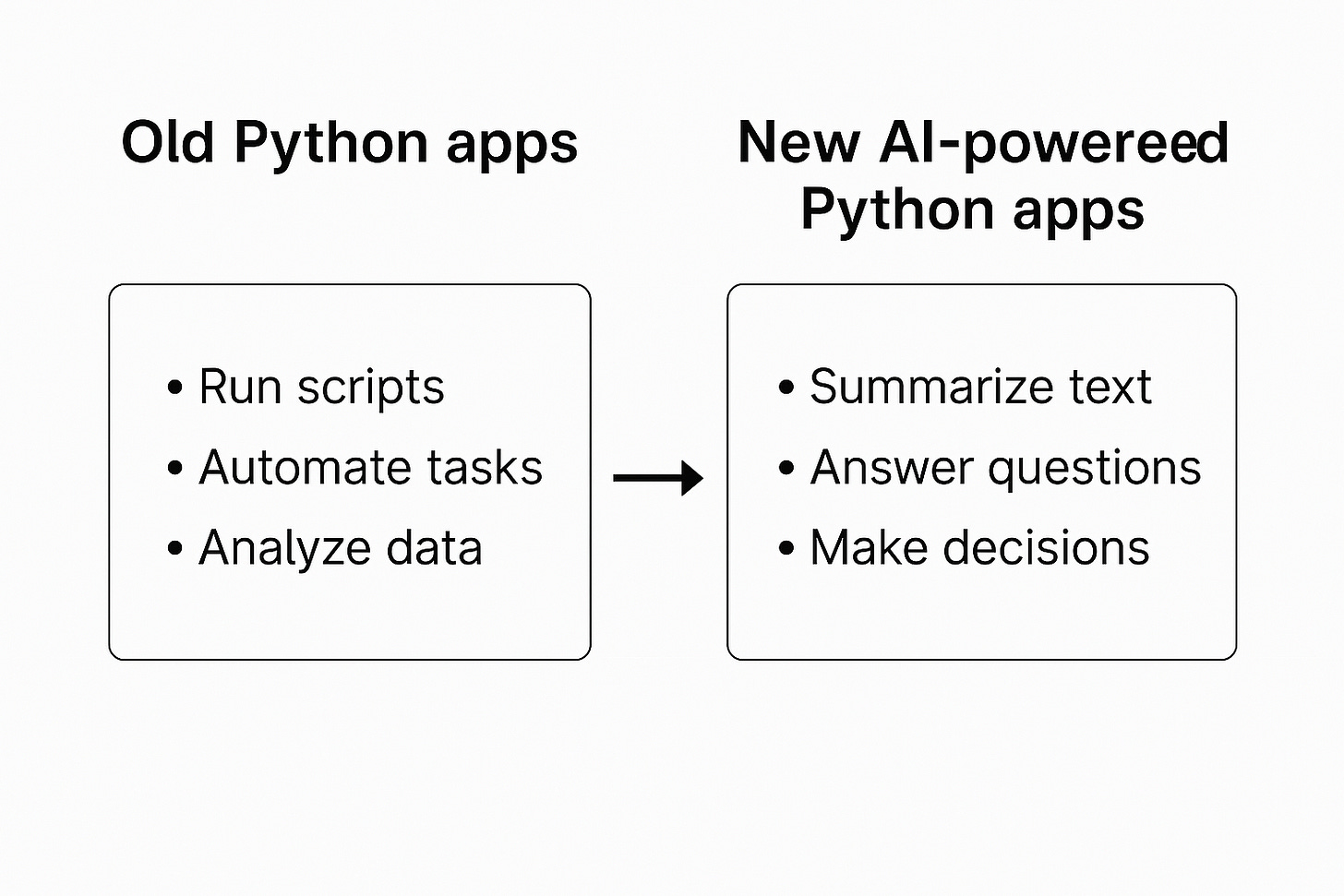Why Now Is the Best Time Ever to Learn Python
Python has always been a practical language. You could use it to automate tasks, build web apps, analyze data, or work with files and APIs. That alone made it useful.
But something has changed.
Python can now integrate directly with large language models (LLMs) like GPT. That means your Python programs can now understand language, summarize documents, answer questions, and make basic decisions — tasks that weren’t possible with plain Python before.
And you don’t need to build your own AI model. Services like OpenAI, Anthropic, Google, and others now offer LLMs via APIs. With just a few lines of Python, you can access models that would’ve taken years and millions of dollars to train yourself.
If feel overwhelmed by how developing AI powered apps work, I explain the AI ecosystem in this video here on AI Shortcuts:
What You Can Build Now (That You Couldn’t Before)
Before:
Run scripts
Automate file handling
Scrape websites
Clean and analyze data
Now:
Summarize PDFs
Classify or filter text automatically
Build your own chatbot
Extract structured data from unstructured input
Automate complex workflows that depend on context or intent
All of this happens through a Python program connected to an LLM API.
Why This Matters
You no longer need to hard-code every rule into your program. No need for endless if-conditionals or complex regular expressions. The LLM handles open-ended logic, while you use Python to manage files, databases, inputs, outputs, and workflows. Moreover, the LLM can also execute Python functions when it sees it necessary. You just need to write meaningful doc strings for your functions and the LLM will know what that function does and when it needs to execute it. For example, if the user asks your AI assistant program about the time, the LLM will execute the function that contians datetime.now() and then tell the user the time in natural language.
This makes Python more valuable than ever. You’re not just writing automation scripts anymore. You’re writing systems that can operate with context and language.
You’re Early
If you're learning Python now, you’re getting in at the right time.
You’re not too late to take advantage of this shift. If anything, most developers haven’t caught up yet. And those who do learn how to combine Python + LLMs will be the ones building the next generation of tools, products, and workflows.
Python used to be a scripting language. Now it’s a full interface to modern AI systems. Learn it, and you can build almost anything.




